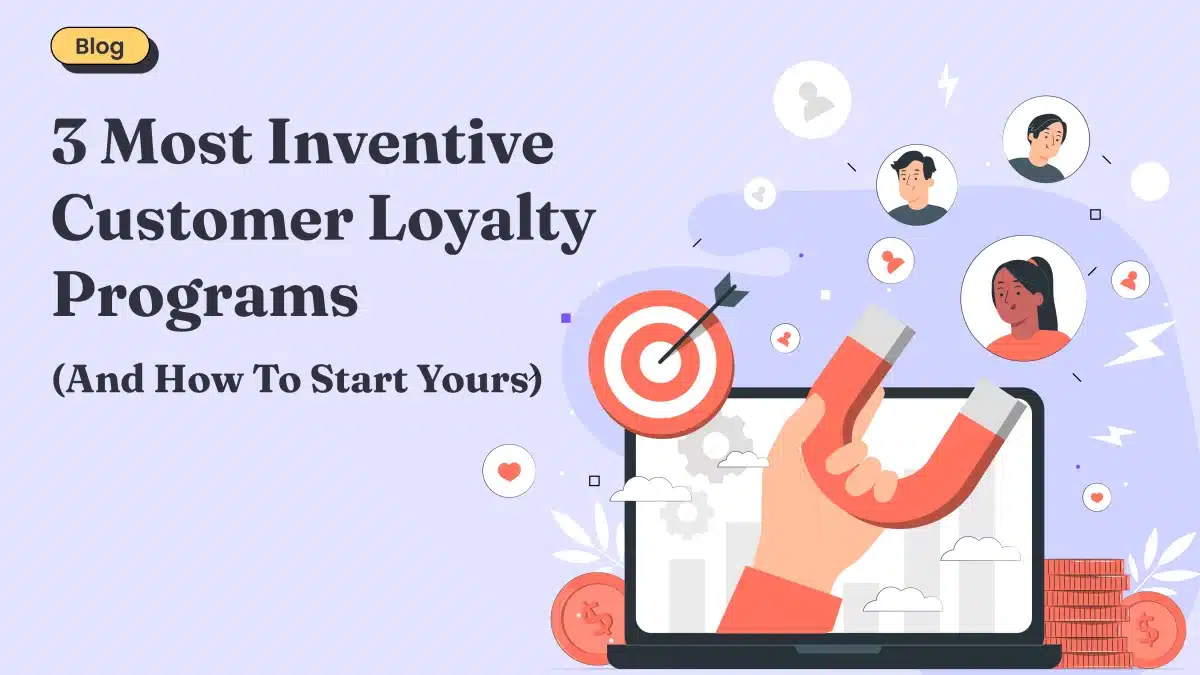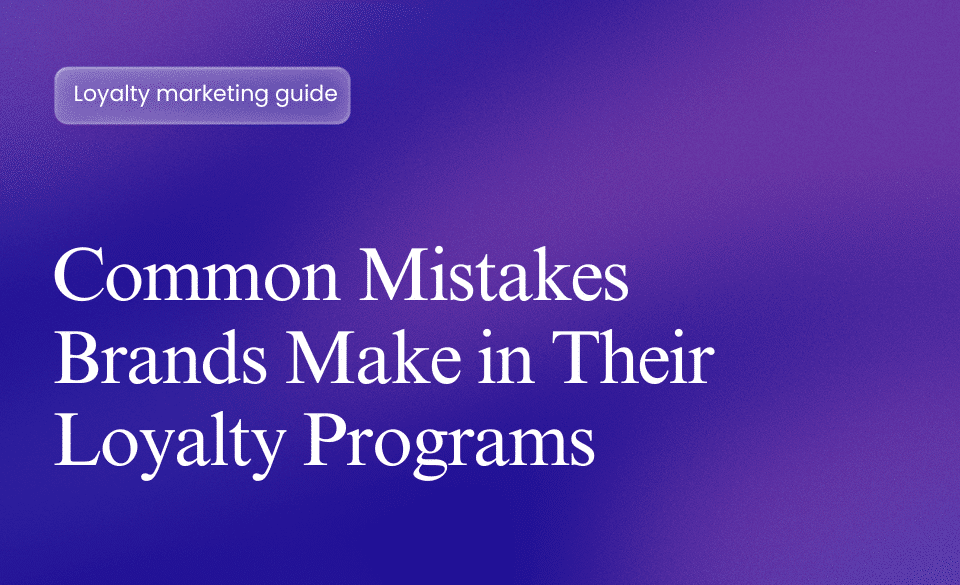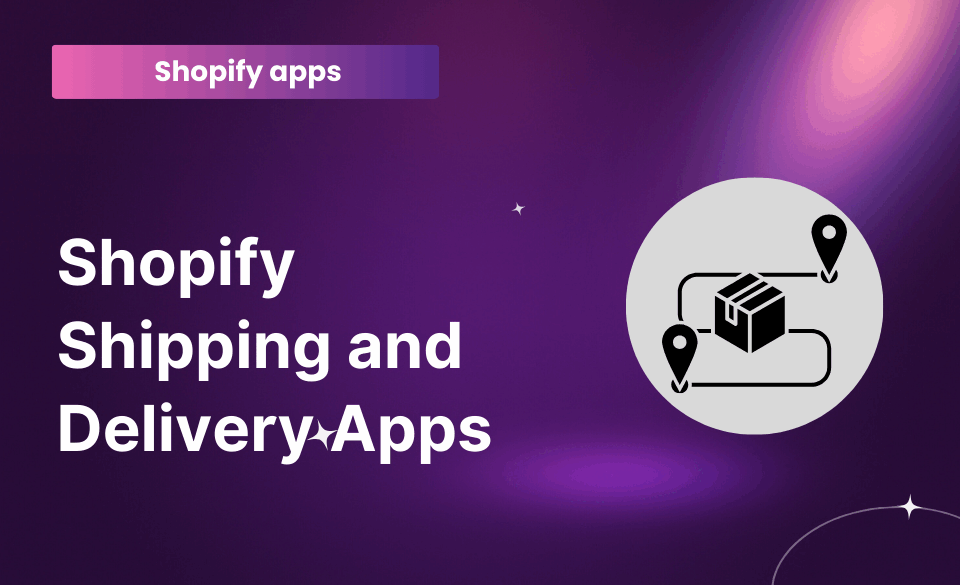
New updates: Combining discounts
30 May, 2023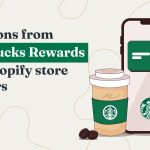
Lessons from Starbucks loyalty program for Shopify store 2024
11 July, 2023Loyalty programs are an essential part of building a successful online business. While most marketing advice focuses on acquiring new customers and expanding reach, cultivating brand loyalty with existing customers is equally important. In this blog, we will explore the significance of customer loyalty and provide some loyalty programs examples of innovative programs implemented by various companies.
What is customer loyalty?
Customer retention is crucial for business growth, as acquiring new customers can cost between 5 and 25 times more than retaining existing ones. Unfortunately, the importance of customer loyalty is often overlooked in marketing discussions. However, creating programs that reward customers for their loyalty can significantly benefit a business. By the end of this blog, you will understand why customer loyalty programs are crucial for online businesses and gain inspiration to create your own program.
Quality products that solve specific problems for customers are the foundation of building brand loyalty. No loyalty program can compensate for a poor product or service. However, if customers trust and value your offerings, implementing a loyalty program can enhance their experience and incentivize them to continue shopping with you.
Contribution of loyalty program to business growth
Rewarding customers for their purchases has proven to be a smart business strategy. According to study research done by Frederick Reichheld of Bain & Company cited by the Harvard Business Review, increasing customer retention rates by just 5% can boost profits by 25% to 95%. Building relationships with customers and creating programs that appreciate their loyalty are effective ways to foster long-term loyalty.
Mining for gold
Many store owners face difficulties in setting up a loyalty program, despite being aware of its benefits. This is true for various types of BON’s customers, including small businesses, growing enterprises, and established brands. They are unsure about what to do with their loyalty programs and how to make them effective.
This begs the question(s):
- How can you figure out what kind of loyalty program will attract your customers?
- How can you understand why people keep coming back to your store and interacting with your program?
- What unique ways can you use to attract your customers and make your program stand out from others?
How BON helps you create customer-oriented programs
A lot of people use BON in various ways to reward and VIP Tiers program. These features can be categorized into four main types of loyalty programs that businesses often use to strengthen relationships with their customers.
Points-based loyalty program
BON provides you with a lot of earn-point rules based on points-based loyalty program. They are categorized into 3 groups of activities related to customer accounts, purchase, and social media interaction. In each group of rules, customers earn points for various actions, such as making purchases, signing up for newsletters, leaving reviews, or sharing about the business on social media. These points can be traded in for rewards such as discounts or merchandise. Points-based programs work well when they are easy to understand and provide clear incentives for customers to take further action.
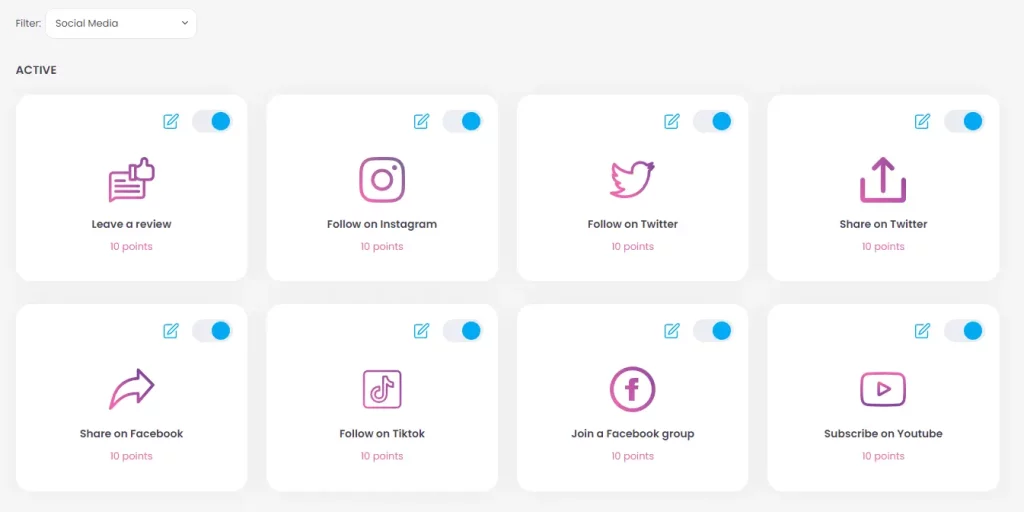
How many points should you reward your customer?
This is a common question among store owners who are setting up their loyalty programs for the first time. In order to determine how many points your first reward should be valued at, we first need to break down two things–the value of your points and how customers can earn them.
Determine the right point value
Finding the right point value is important. You want to make sure there’s a fair balance between you and your customers. It means giving enough points for valuable rewards without hurting your profits.
As a general guideline, we suggest giving back 3-10% in points for every dollar spent.
If you have expensive products and good profit margins, you can aim for the higher end, like 10%. For example, if you offer $1 in rewards for every 100 points earned, customers should earn 3-10 points for every dollar they spend. This way, 3 points earned divided by 100 points needed for a dollar off equals 3%.
Tiered loyalty programs
When you use tiers in loyalty program, customers are assigned ranks based on their engagement or spending. Higher-ranked customers receive more ongoing benefits. It is crucial to ensure that these programs don’t solely focus on spending, but also offer alternative strategies for customers to reach higher tiers, such as participating in surveys, referring friends, or joining online communities.
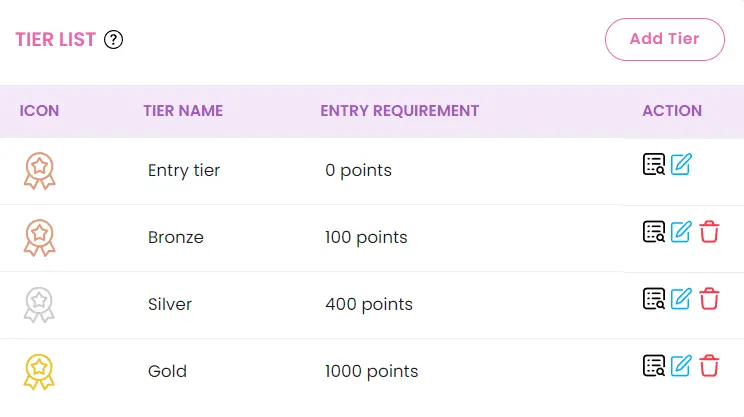
Another recommendation is that you should offer customers entry rewards to encourage them to enter your Tiered programs. This will motivate them to participate and work their way up to higher ranks. When they see the benefits of VIP Tiers, they’ll be motivated to make more purchases or engage with your store.
Paid loyalty programs
Paid loyalty programs require customers to pay a fee for access to instant and ongoing perks from a brand. The benefits offered should outweigh the cost of membership, such as early access to products, customized rewards, or exclusive community access. Paid programs are straightforward and easy for customers to engage with. We will give you some paid loyalty programs examples below in this blog.
Value loyalty programs
Value loyalty programs take a different approach by allowing customers to make a greater impact on causes they care about. Companies can donate a portion of every sale to specific charities or offer customers the option to trade in their loyalty program points for donations. This type of program builds trust and rapport with customers, particularly when they feel aligned with the causes being supported.
While these are the major types of loyalty programs, the sky’s the limit when it comes to rewarding customers. The key is to create a program that intentionally appreciates and rewards your ideal customer. To determine the most suitable loyalty program for your business, consider surveying your existing audience to understand their preferences and needs.
Now let’s explore some real-world examples of companies with successful loyalty programs!
3 Innovative Customer Loyalty Programs
– Blume
Blume’s loyalty program, called Blumetopia, combines a points-based system with tiers. Customers earn BBs (Blume points) for various actions and can trade them in for special prizes and gift cards. They also have the opportunity to reach higher tiers, which are Friends, BFFs, and Soulmates. Their tiered program offers exclusive benefits like private Facebook groups and birthday gifts.
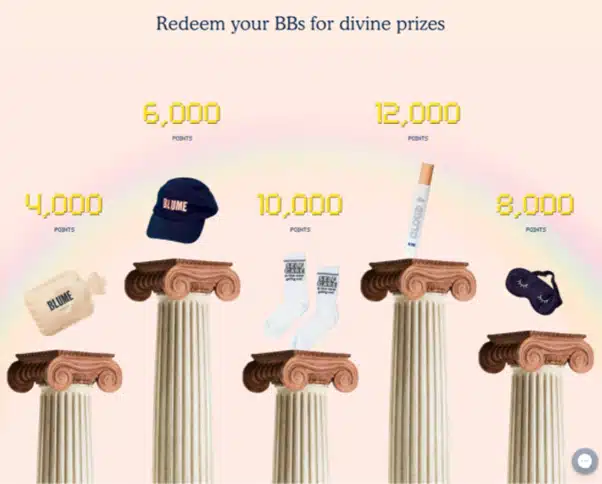
– ThirdLove
ThirdLove’s loyalty program, Hooked Rewards, operates on a tiered system that rewards customers based on their lifetime spent with the company, which means this is a paid Loyalty program. The program offers three levels of membership, each with unique benefits. Notably, new customers can join for free and immediately enjoy perks like free shipping options and bundling discounts. The program’s simplicity and ease of use have resulted in a significant increase in account creation for ThirdLove.
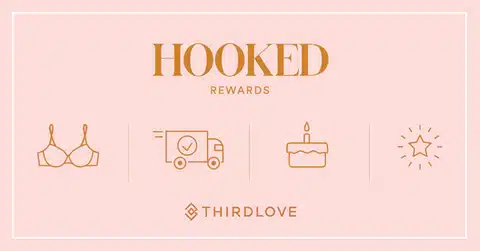
– DSW’s Designer Shoe Warehouse
DSW has elevated its traditional tiered points program by incorporating unique features. In addition to standard perks like free shipping and birthday gifts, DSW also combines a value loyalty program. Their customers can earn bonus points by donating gently used shoes or choose to donate their rewards to those in need. DSW’s personalized approach, recognizing customers by their name or payment method, along with targeted marketing emails, boosts engagement and ensures customers remain engaged with the program.
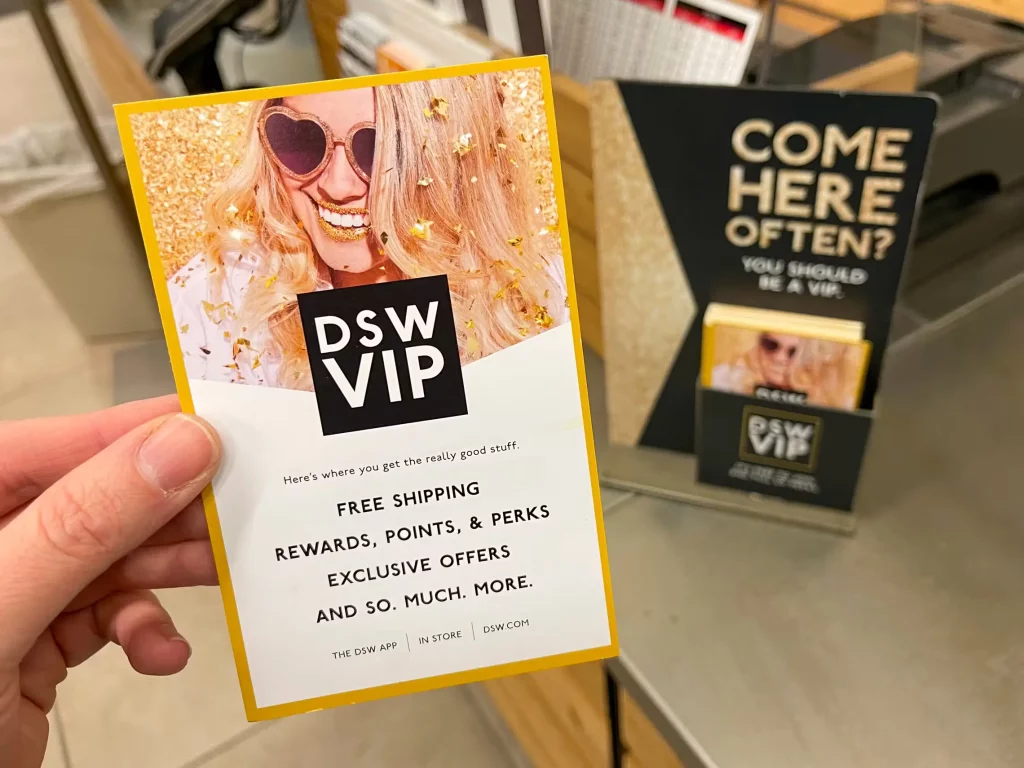
Do things differently with your loyalty program
The three innovative loyalty program examples above highlight the importance of aligning rewards with a company’s mission and values. While not every business may be able to offer the same level of benefits as these examples, it is crucial to draw inspiration from their approaches. Instead of relying solely on discounts or limited perks, successful loyalty programs focus on providing rewards that resonate with both the company’s identity and the customers’ goals.
To create a loyalty program that really fits your customers, you need to customize it and understand what they want. You can start by using these loyalty program examples as a guide and create programs that build strong relationships and keep customers loyal to your brand. But don’t forget to come up with your own unique rewards to make a lasting impression on your customers.
